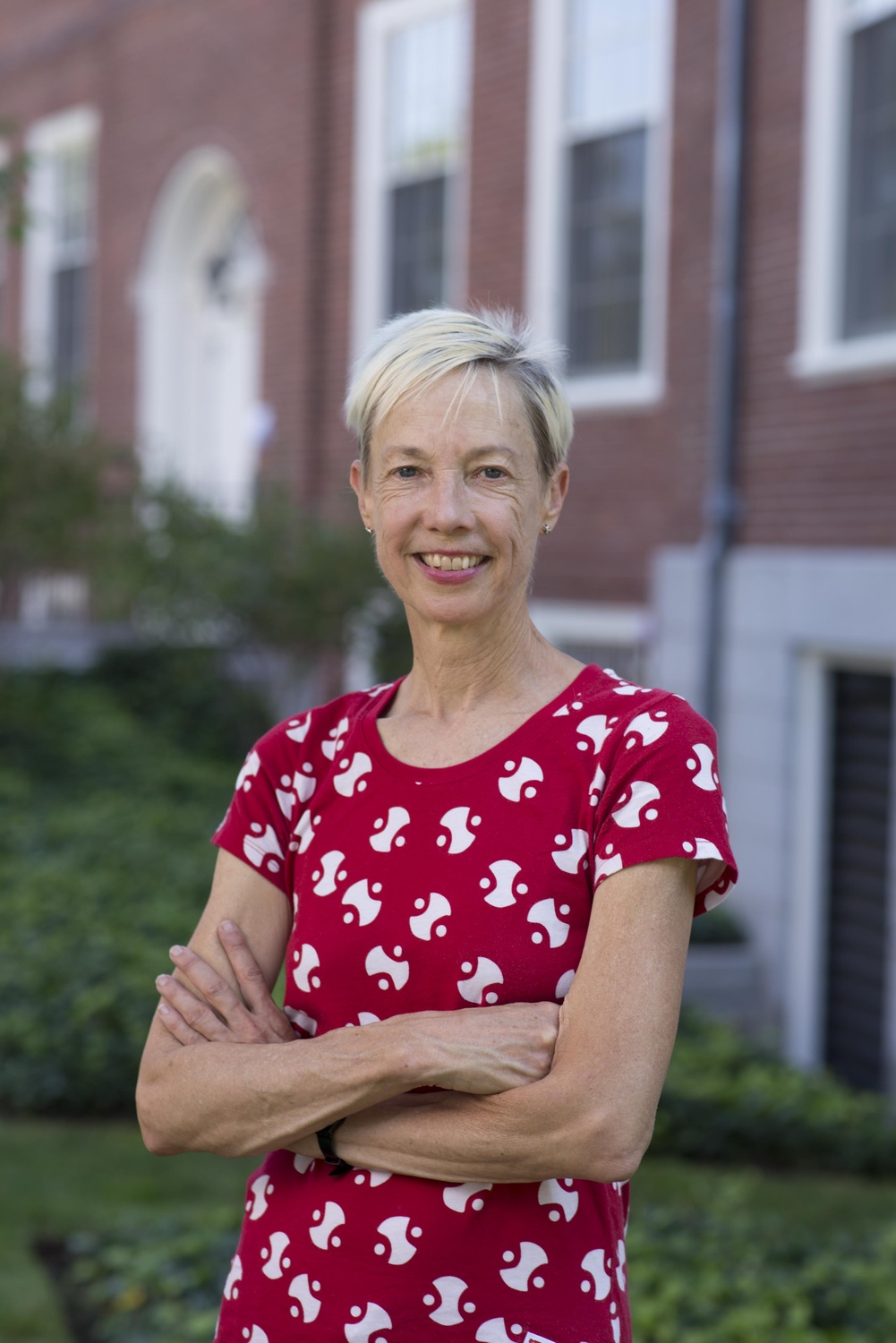
News
‘Deal with the Devil’: Harvard Medical School Faculty Grapple with Increased Industry Research Funding

News
As Dean Long’s Departure Looms, Harvard President Garber To Appoint Interim HGSE Dean

News
Harvard Students Rally in Solidarity with Pro-Palestine MIT Encampment Amid National Campus Turmoil

News
Attorneys Present Closing Arguments in Wrongful Death Trial Against CAMHS Employee

News
Harvard President Garber Declines To Rule Out Police Response To Campus Protests
Artist Spotlight: Karole Armitage

Karole Armitage is a world-renowned dancer and choreographer who combines various artistic mediums and styles of movement to create innovative and “modern” dance. She was trained under George Balanchine as a member of the Ballet du Grand Théatre de Genève in Switzerland before beginning her work in contemporary dance with the Merce Cunningham Dance Company from 1976-1981. Her first two pieces of choreography, “Ne” in 1978 and “Drastic Classicism” in 1981, were set to punk music and utilized eclectic costumes and neon lighting, earning her the title of the “punk ballerina.” She has since continued to break boundaries in the world of dance, choreographing for stage, film, and music videoes—including Madonna’s “Vogue” and Michael Jackson’s “In the Closet”—with subjects as diverse as the Audobon Society’s Birds of America and global climate change. She is a 2015-2016 Mildred Londa Weisman Fellow at the Radcliffe Institute and spoke with The Crimson from Kansas, where she is temporarily based to study the dance traditions of the Plains Indians tribes in conjunction with her research at Harvard.
The Harvard Crimson: You’ve worked with some of the most renowned dancers and choreographers of our time, including George Balanchine and Merce Cunningham. How did their different dance styles influence your own development as a dancer and choreographer?
Karole Armitage: Balanchine, in many ways, is the Shakespeare of dance; he did comedies, he did existential pieces, romantic pieces, history pieces—so he has this kind of range…and a huge vocabulary like Shakespeare. So refinement, poetry, expressiveness, musicality—those things really come from Balanchine. Then [with] Cunningham there’s a whole new way of intellectually understanding what stage space is, because he used…the stage as a field. So there’s simultaneous action across the whole stage space—very different from Balanchine, who really did have a central figure that was more important, or where the focus of the eye would be. So, in a way I learned virtuosity, poetry, musicality from Balanchine that I used in my choreography; intellectual adventures come from Cunningham.
THC: Where do you think modern dance is headed?
KA: Well, that is probably the million dollar question. I think dance is in a crisis now, because…cultural habits are changing...and this real investigation of what I would call pure dance is not the hip thing right now. You know culture goes in cycles, and it’s a tough moment…. Pure dance...deals in a way with more personal internal questions of “what does it mean to be alive,” “what is eroticism,” those in a way more ineffable, more personal spiritual questions are just not as written about…. So where I think it’s going is of course what I’m trying to do. There’s trying to bring a real funky democratic feel to the stage so that there’s simultaneity of action—you’re seeing real density and complexity but it’s also legible and articulate.
THC: To what degree is choreography an intellectual process for you, and how do you balance its intellectual and aesthetic elements?
KA: The way “On the Nature of Things” [a recent work on climate change] began was first with taking a long and very interesting text by this scientist…and reducing it to very succinct, important points…. And then there’s the research in my case of finding the music that would go from harmony to disturbance to really threatening, aggressive violence…a raising of consciousness, as people faced up to threat, and then returning to harmony…. And then you have to develop a dance vocabulary that shows harmony, that shows disturbance, that shows threat and violence, that shows developing consciousness, so all of that is a lot of intellectual research, to literally find the way movement viscerally gives the experience and the metaphors of these states of mind.
THC: You engage with many different styles, including punk and pop. How do you choose the music on which your choreography is based and how do you understand the relationship between music and motion?
KA: One of the most important things I look for in music is really a lot of space…because if the music is really full and intense, it speaks so much on its own terms that adding dance feels like making a cloyingly over-rich dessert…. It’s a kind of in-between. There’s a lot of independence; well it’s almost like making love—you know you’re independent, but you’re also interacting with your partner…. It’s paying a lot of attention but it’s being very free at the same time.
THC: Your work pulls from many different styles of dance and seems to avoid classification. To what degree do you seek to defy genre in dance?
KA: I think [my choreography] is fairly genre-defying, which is not a good thing when you live in a world that needs marketing…. But I’m just somebody who likes the grey area and who believes that people can hold contradictory ideas in their minds simultaneously, so I embrace that absolutely.
THC: With which particular areas of dance will you be engaging while you’re at Harvard?
KA: I’m working…on a project about Aboriginal culture from the Kimberley region of Northwest Australia…. This inspired me to want to think about our own country’s Native American traditions, which are so rich and complex…. So I’m in Kansas [temporarily] because there is the Haskell Indian Nations University, and I would like to do something about Plains culture, trying to bring a kind of performance and sense of the nature that created this performance.
Want to keep up with breaking news? Subscribe to our email newsletter.
